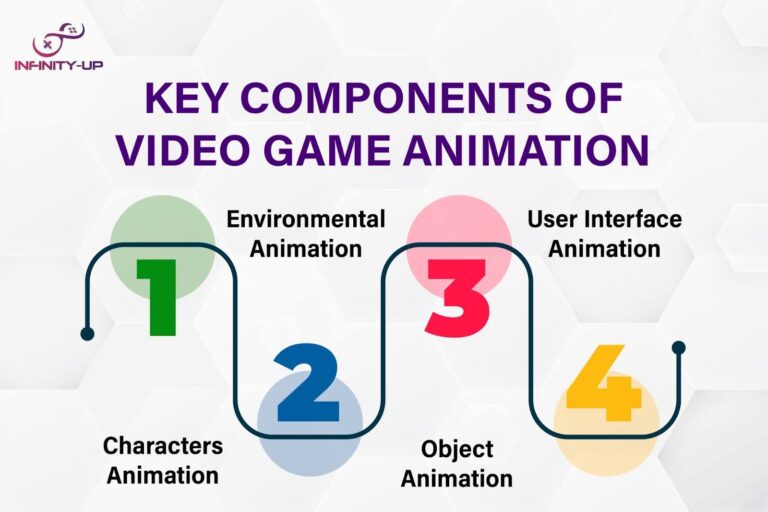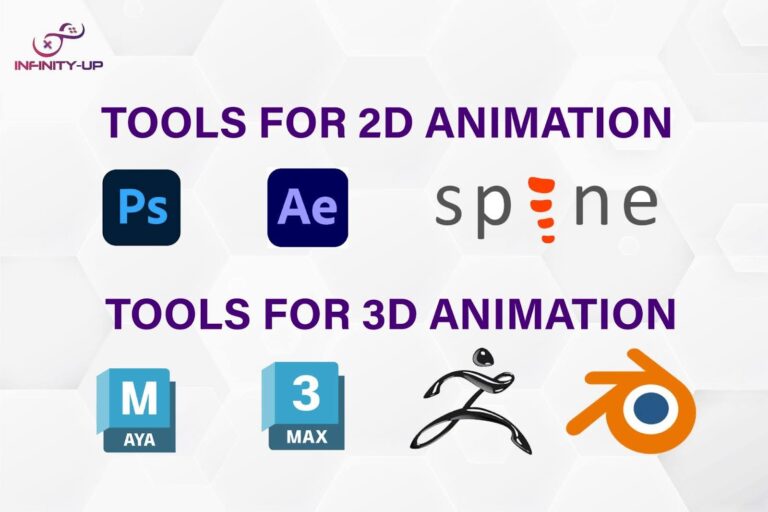What is animation in games & how does it work
What is Animation in Video Games & How does it work
Video game animation is essential for creating fun and immersive experiences. With advanced technology, developers craft stunning animations that evoke emotions like excitement or sadness, enhancing storytelling and character development. As a driving force behind modern gaming success, animation boosts engagement and captivates players, making it a cornerstone of today’s top video games.

Explanation of video game animation
Animation in video games brings stories and characters to life through advanced techniques and technologies. Initially featuring simple pixelated characters, video game animations have evolved into highly realistic, lifelike movements. Modern tools like motion capture enhance character movements and facial expressions, elevating storytelling and character development. As technology advances, video game animation will continue to improve, making games more engaging. The future of animation in gaming promises endless possibilities, transforming player experiences with ever-more realistic and captivating visuals.
The Functioning of Animation in Video Games
Animation in video games has advanced significantly, enhancing players’ enjoyment and immersion by bringing characters and worlds to life. Beyond entertainment, animations simplify complex ideas and convey emotions more effectively than words. They play a vital role in educational games, redefining learning with games and making them more engaging for kids. As gaming evolves, animation continues to drive creativity and depth in the industry.
Emphasizing the role of animation in video games:
Animation is the key to creating truly enthralling video games. By bringing characters to life with expressive movements and transforming environments dynamically, animation fosters a cohesive and engaging gameplay experience.
Focusing on the player experience in video games:
Animation enhances the player experience by providing immediate visual feedback. It illustrates the consequences of actions, guides players through in-game events, and delivers vital information at a glance.
Enhancing Storytelling through video games:
Dynamic animation enhances storytelling. It brings character development, emotional expressions, and scripted moments to life, creating a more cinematic and engaging gaming experience.
Focusing on the technical aspects of video games:
In addition to responsive and well-crafted animations, smooth character movements, realistic physics, and seamless transitions further impact gameplay dynamics, improving a game’s overall playability.
Building a Strong Visual Identity in video games:
Animation plays a big role in giving a game its style and feel. For example, some games use fun, cartoon-like animations, while others go for a realistic look. These animation styles set the tone and make the gaming experience more memorable and unique.
Types of Video Game Animation
Different types of animation bring video games to life, making them interactive and engaging. Each type has its role, such as improving character storytelling, creating natural movements, or adding stunning visuals to enhance the gaming experience.
Key Components of Video Game Animation:
Characters Animation
Environmental Animation
Object Animation
- User Interface (UI) Animation

2D Animation:
Traditional 2D animation involves creating movement in a two-dimensional space. It is characterized by hand-drawn or digitally crafted frames that are played sequentially to bring characters and scenes to life. Due to its stylistic appeal and ease of production, this technique is widely used in classic side-scrolling games, indie titles, and mobile games.
3D Animation:
3D animation takes animation to the next level by adding an extra dimension, allowing for life-like character movements and realistic environments. Involving the manipulation of three-dimensional models, this technique creates dynamic, transportive experiences.
Blending 2D and 3D Animation Styles for Eye-Catching Visuals
Blending traditional 2D animation with modern 3D techniques creates a unique and captivating visual experience. This fusion adds depth to 2D characters and gives 3D models a playful, cartoony vibe. By combining these styles, animators produce eye-catching content that keeps viewers engaged. Whether you’re hiring a 2D animator or a 3D animation expert, this approach can elevate your project and make a lasting impact.
Essential Animation Techniques for Engaging Video Games
Video game animation uses key principles from traditional animation, adapted to create smooth, engaging, and interactive experiences. These principles ensure realism and immersion in the gameplay.
Timing and Spacing:
Determines the speed and flow of movements, making them feel natural and believable.
Anticipation:
Prepares players for an action, like a character crouching before jumping, making movements more intuitive.
Follow through & overlapping action:
Adds realism by showing parts of the character or object continuing to move after the main action stops.
Exaggeration:
Enhances actions for dramatic effect, often seen in stylized or cartoonish games.
Secondary Action:
Adds depth by including smaller, supporting movements, like a character’s hair swaying during a run.
Squash and Stretch:
Conveys weight and flexibility, especially in character movements or environmental effects.
Staging:
Focuses attention on important actions or elements by controlling how scenes are presented.
Appeal:
Ensures characters and animations are visually interesting and relatable to players.
By using these principles, video game animators create deep and emotionally engaging worlds that feel alive.
What Makes Animated Games So Enjoyable for Players
Animated games engage players with vibrant visuals, creativity, and emotional depth. Dynamic animations bring game worlds to life, drive plot development, and foster connections with characters. By offering overwhelming, imaginative experiences, animated games deliver unmatched entertainment and engagement, making them a favorite for players worldwide.
Transforming Animation with Advanced AI Technology
AI technology is transforming animation by speeding up production and enhancing visuals, allowing animators to focus on creativity. Hybrid Casual Games are also reshaping gaming by combining simple gameplay with deeper progression, appealing to a wide audience. Together, these advancements are shaping the way for a new era in both animation and gaming.
Top Animation Tools for Game Designers
Creating video game animations involves various tools and techniques to bring characters and environments to life. For 3D animation, software like Maya, Blender, ZBrush, and 3ds Max is essential for modeling, while rigging tools enable lifelike movements. Motion capture technology and animation software like Spine are used for fluid animations. For 2D animation, After Effects and Spine help craft dynamic visuals. Each tool plays a key role in enhancing gameplay and immersing players in vibrant, interactive game worlds.

INFINITY-UP Leading the Way in Game Development
INFINITY-UP, we’ve been designing exceptional gaming experiences over the years, delivering over 100 successful projects globally, including educational and endless runner games. Specializing in full-stack game development, animation, and extended reality (XR), we use innovative tools like Unity and HTML5 to ensure expansive, high-quality results.
INFINITY-UP excels as a premier graphic design agency, by The Manifes offering tailored services across game design, 2D/3D art, gamification, and Metaverse solutions. Our dedication to quality, growth, and client satisfaction has earned us a reputation as a top-tier company, known for combining innovation and creativity to turn ideas into gaming successes.
Partner with the Best in Animations for Video Games
To leverage the power of animation in your next gaming project, partner with INFINITY-UP. With a proven track record of delivering high-quality, engaging gaming experiences, we’ve been trusted by clients worldwide. Our team of skilled animators and game developers utilizes advanced techniques and modern tools to bring your vision to life. We provide comprehensive solutions tailored to your needs from concept to completion.
Let’s collaborate to create the next generation of gaming experiences. Contact us for a consultation.
FAQ
Q1: What are some common animation bugs, and how are they resolved?
A: Common animation bugs include jitter (shaky movement), ghosting (trails), popping (sudden jumps), and stretching (distortion). These are usually fixed by adjusting timing and spacing, adding more frames, cleaning up the animation, and using better animation techniques like squash and stretch.
Q2: How do animations differ between 2D and 3D games?
A: 2D animations are flat and limited to a single plane, while 3D animations have depth and can be viewed from multiple angles.2D animations are often simpler and faster to produce. In contrast, 3D animations can be more complex and require more resources.
Q3: How does animation impact storytelling in video games?
A: Animation in games breathes life into characters and stories. It conveys emotions, builds personality, and immerses players in the game world.
Q4: How do game engines like Unity or Unreal Engine handle animations?
A: Game engines like Unity and Unreal Engine handle animations through tools for creation and editing, support for external animation software, and systems for controlling, blending, and optimizing animations within the game.

